THE GRATEFUL DEAD
Norman Warwick follow Jacob Iotti and Jim Beviglia back to
…. where life began for THE GRATEFUL DEAD
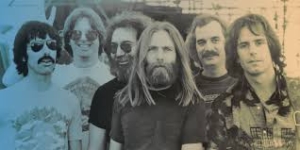
Fans of the psychedelic rock band The Grateful Dead (left) will tell you to love the band is to love its lifestyle. Those same folks, when asked what their favourite song from the group is, will often tell you something along the lines of: it’s all one big song, man.
Indeed, the jam band is infamous for its raucous, elongated, trippy shows and its fans who travel around the country taking part.
But what about the band’s actual name? And were they always known as The Grateful Dead? Well, that’s what we’ll investigate here. So, without further ado, let’s dive into the world of the band—along with one of their more popular tunes below.
The band was formed (under a different name) in 1965 in Northern California in the city of Palo Alto. Blending rock, folk, country, jazz, bluegrass, blues, and more genres, the band’s brand of psychedelic music has become the stuff that legend is made of—especially via the band’s live shows, which often include lengthy jams that can last 10, 20, 30 or more minutes.

Today, the band’s fans (right) are known as Deadheads, both for their appreciation of the band and for their penchant to trip out with psychedelic drugs.

Born in the Bay Area, where counter-culture in America was taking off in the 1960s, the band’s founding members include lead guitarist and vocalist Jerry Garcia (left), rhythm guitarist Bob Weir, keyboardist Ron McKernan, bassist Phil Lesh, and drummer Bill Kreutzmann. Together, they created a group that will live in infamy.
Originally, the band was known as the Warlocks. Members of that early outfit had played together in various San Francisco groups, including the traditional jug band Mother McCree’s Uptown Jug Champions. Lesh was the final member to join the Warlocks before the group changed its name officially to the Grateful Dead.
The band’s first show was at Magoo’s Pizza Parlor, which was located at 639 Santa Cruz Avenue in suburban Menlo Park. It took place on May 5, 1965. The location is now a furniture store.
The band continued its gigs, playing bar shows like Frenchy’s Bikini-A-Go-Go. They also played a regular gig that included five sets a night, five nights a week for six weeks at the In Room in Belmont.
The band ended up changing its name from The Warlocks after finding out that another group was known by that same moniker. In addition, The Velvet Underground had also been known as The Warlocks but had musicians later landed on the name The Grateful Dead. According to legend, that name was chosen from a dictionary. Said Lesh, Jerry Garcia picked up an old Britannica World Language Dictionary … [and] … In that silvery elf-voice he said to me, ‘Hey, man, how about the Grateful Dead?”
The definition of the moniker was “the soul of a dead person, or his angel, showing gratitude to someone who, as an act of charity, arranged their burial.”
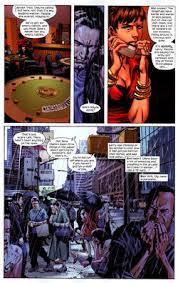 And according to Alan Trist, the director of the band’s music publishing company, Ice Nine, Garcia found the name in the Funk & Wagnalls Folklore Dictionary when his finger landed on that phrase while playing a game of “Fictionary.” In Garcia’s biography Captain Trips (right), the author Sandy Troy said that the group was smoking the psychedelic drug DMT at the time.
And according to Alan Trist, the director of the band’s music publishing company, Ice Nine, Garcia found the name in the Funk & Wagnalls Folklore Dictionary when his finger landed on that phrase while playing a game of “Fictionary.” In Garcia’s biography Captain Trips (right), the author Sandy Troy said that the group was smoking the psychedelic drug DMT at the time.
The term “grateful dead” also appears in a number of folktales from various cultures.

The Grateful Dead’s first show was in San Jose on December 4, 1965, at one of Ken Kesey’s Acid Tests. Kesey (left) was an author (not least of One Flew Over The Cuckoo´s Nest9 and psychedelic drug proponent.
While some early demo tapes have survived, the first of some 2,000 concerts known to have been recorded by the band’s fans came from a gig at the Fillmore Auditorium in San Francisco on January 8, 1966. And later that month, the group played at the Trips Festival, which was a three-day psychedelic rock weekend party produced by Kesey and others. Hippies unite!
After Garcia died in 1995, former members of the band, along with other musicians, toured as the Other Ones in 1998, 2000, and 2002. Later, they toured as the Dead in 2003, 2004, and 2009.
In 2015, the four surviving band members marked the group’s 50th anniversary in a series of shows that were billed as their last performances together. Since then there have been other groups born from those players, including Dead & Company, Further, the Rhythm Devils, Phil Lesh and Friends, and more.
If I seemed to be damning The Grateful Dead with faint praise in my introduction on our front page I can assure you that is not a true reflection of my true estimation of them. They might not have been a band I really ´listened´ to in the way I would hang on the lyrics of Townes Van Zandt or Tom Waits or the folk-rock of John Stewart but I would often put on a Grateful Dead album simply to feel the groove.
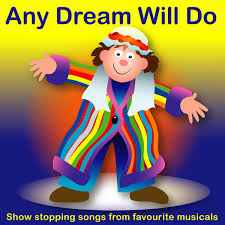
Compelled, now, to refresh my memory with some research I now realise that the Andrew Lloyd Webber song I referred to earlier was Any Dream Will Do (right), that was released for public consumption in 1968.
The Grateful Dead song I likened it to, …or likened to it,… was Ripple off the gorgeous, laid back American Beauty album released in 1970.
So, although I am notoriously known as being tone deaf, those two songs that seem to me so much alike (in melody, in arrangement and in the message the tune carries) were actually created only eighteen months or two years apart, a time span that only fuels my suspicions. Nevertheless, the respected music journo Jim Beviglia delivered a fairly exhaustive history of the Grateful Dead song riplle and in his American Songwriter article made no reference to its similarlity to any other song, living or dead !
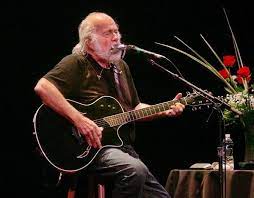
As a result of their well-deserved reputation as the preeminent live act of their era, it’s understandable that the studio recordings of The Grateful Dead can be somewhat overshadowed. Along those same lines, the song-writing prowess of the band, which often boiled down to the music of Jerry Garcia and the lyrics of Robert Hunter (left), doesn’t always get the credit it deserves.
Yet in 1970, the Dead released a pair of studio albums within months of each other that seemed to both capture the unease of an entire generation unmoored from their ideals and act as a balm to soothe those disappointments. Workingman’s Dead was quickly followed by American Beauty, and from that latter album came “Ripple,” perhaps the quintessence of both the band’s delicate studio magic and the Garcia/Hunter partnership
Hunter certainly seems to think he was firing on all cylinders for the song. When asked by Rolling Stone earlier this year to name a certain lyric of which he was particularly proud, he responded, “Let it be known there is a fountain/ That was not made by the hands of men,” a line from “Ripple.” That’s pretty much my favourite line I ever wrote, that’s ever popped into my head. And I believe it, you know?”
Lines like that were tailor-made for Garcia because he could deliver heady profundities like that with a twinkle in his voice, keeping them grounded when they easily could have floated off into the ether. For “Ripple,” Garcia constructed a melody that was pure and humble, tinged with a bit of sadness. Hunter recalled to Rolling Stone when his old friend came up with the music to match his lyrics: “We were in Canada on that train trip [the Festival Express, 1970] and one morning the train stopped and Jerry was sitting out on the tracks not too far off, in the sunrise, setting “Ripple” to music. That’s a good memory´

In the studio, the band caressed the song with the gentleness of a lover. Garcia’s acoustic guitar is the song’s tender heart, while the rhythm section of Phil Lesh and Bill Kreutzmann nudge the song forward. By the time they got to “Ripple” on American Beauty (right), the Dead had darn near perfected the harmonies they used heavily on Workingman’s Dead. The ensemble voices on “Ripple” provide comfort when the words evoke hardship.
Hunter delivers lyrics that evoke cosmic wisdom and serenity without ignoring the darkness on the fringes of even the most blessed lives. The song nods at different religions and philosophies, from the Christian overtones of the lines about cups both empty and filled, which recall the 23rd Psalm, to the Buddhist koan feel of the refrain.
The chorus even breaks off from the relatively straightforward rhyme scheme of the verses to form a haiku, another example of East meeting West in the song.
The song opens up with Garcia opining on the power of music, or perhaps it’s better to say the lack thereof. Even if his words glowed and were majestically propelled through the air on a “harp unstrung,” he has no certainty that they’ll have any positive impact on the listener.
Still, ineffectuality aside, he also concedes that the world is better for having music: “I don’t know, don’t really care/ Let there be songs to fill the air.”
In the second verse, things turn much more somber, as the narrator, after wishing good tidings and full cups on his audience courtesy of that magical fountain, warns of a “road, no simple highway/ Between the dawn and the dark of night.” On this path the traveller will enjoy no company: “That path is for your steps alone.”

With these unanswerable mysteries still lingering, the chorus interrupts and the mandolin played by David Grisman (left) seems to suspend the song in mid-air so Garcia can deliver the hauntingly lovely imagery of the chorus: “Ripple in still water/ When there is no pebble tossed/ Nor wind to blow.” We can envisage those lines, their inherent contradictions no match for the music’s ability to put them across.
The final verse returns to again strike a somewhat ominous tone, but the last line offers some consolation. “If I knew the way, I would take you home,” Garcia sings. That the narrator would offer assistance if he could is all the succor he can give to his companion, and somehow it’s enough. In this hard world, it has to be. And if you do have to go it alone, there’s always music to bring along as company, which is what the final “la-da” singalong seems to suggest. The Grateful Dead played “Ripple” in their recent Fare Thee Well shows, and although they essayed it nicely, it could never have quite matched up with that original version on American Beauty.
Maybe that’s because Jerry Garcia was only at those shows in spirit. Or maybe it was just that the studio perfection of “Ripple” couldn’t be improved upon, even by the world’s most renowned live band.
So, as has so happened so often over the past four years I have been writing these daily blogs, my memories have failed to queue in a chronological order, forcing me to dive into some research to prove (or, more often, disprove my points). In doing that I have excellent essays by a couple of great journalists and what makes them great is that they write in such enthusiastic manner that they persuade me to revise some of my long held prides and prejudices.
Whilst reading messrs Iotto and Beviglia I have been a soundtrack that has brought me songs like Touch Of Grey, Hell In A Bucket, Ripple, Uncle John´s Band,…….they were pretty good The Grateful Dead, I should have remembered that more often.

The primary source for this article was a piece in American Songwriter, who are an excellent and positive information stream on the origins and meanings of all things music..
In our occasional re-postings Sidetracks And Detours are confident that we are not only sharing with our readers excellent articles written by experts but are also pointing to informed and informative sites readers will re-visit time and again. Of course, we feel sure our readers will also return to our daily not-for-profit blog knowing that we seek to provide core original material whilst sometimes spotlighting the best pieces from elsewhere, as we engage with genres and practitioners along all the sidetracks & detours we take.
This article was collated by Norman Warwick (right) , a weekly columnist with Lanzarote Information and owner and editor of this daily blog at Sidetracks And Detours.
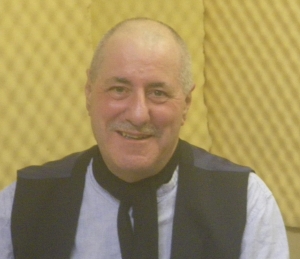
Norman has also been a long serving broadcaster, co-presenting the weekly all across the arts programme on Crescent Community Radio for many years with Steve Bewick, and his own show on Sherwood Community Radio. He has been a regular guest on BBC Radio Manchester, BBC Radio Lancashire, BBC Radio Merseyside and BBC Radio Four.
As a published author and poet Norman was a founder member of Lendanear Music, with Colin Lever and Just Poets with Pam McKee, Touchstones Creative Writing Group (for which he was creative writing facilitator for a number of years) with Val Chadwick and all across the arts with Robin Parker.
From Monday to Friday, you will find a daily post here at Sidetracks And Detours and, should you be looking for good reading, over the weekend you can visit our massive but easy to navigate archives of over 500 articles.

The purpose of this daily not-for-profit blog is to deliver news, previews, interviews and reviews from all across the arts to die-hard fans and non- traditional audiences around the world. We are therefore always delighted to receive your own articles here at Sidetracks And Detours. So if you have a favourite artist, event, or venue that you would like to tell us more about just drop a Word document attachment to me at normanwarwick55@gmail.com with a couple of appropriate photographs in a zip folder if you wish. Beiung a not-for-profit organisation we unfortunately cannot pay you but we will always fully attribute any pieces we publish. You therefore might also. like to include a brief autobiography and photograph of yourself in your submission.
We look forward to hearing from you.
Sidetracks And Detours is seeking to join the synergy of organisations that support the arts of whatever genre. We are therefore grateful to all those share information to reach as wide and diverse an audience as possible.
correspondents Michael Higgins
Steve Bewick
Gary Heywood Everett
Steve Cooke
Susana Fondon
Graham Marshall
Peter Pearson
Hot Biscuits Jazz Radio www.fc-radio.co.uk
AllMusic https://www.allmusic.com
feedspot https://www.feedspot.com/?_src=folder
Jazz In Reading https://www.jazzinreading.com
Jazziz https://www.jazziz.com
Ribble Valley Jazz & Blues https://rvjazzandblues.co.uk
Rob Adams Music That´s Going Places
Lanzarote Information https://lanzaroteinformation.co.uk
all across the arts www.allacrossthearts.co.uk
Rochdale Music Society rochdalemusicsociety.org
Lendanear www.lendanearmusic
Agenda Cultura Lanzarote
Larry Yaskiel – writer
The Lanzarote Art Gallery https://lanzaroteartgallery.com
Goodreads https://www.goodreads.
groundup music HOME | GroundUP Music
Maverick https://maverick-country.com
Joni Mitchell newsletter
passenger newsletter
paste mail ins
sheku kanneh mason newsletter
songfacts en.wikipedia.org/wiki/SongFacts





Leave a Reply
Want to join the discussion?Feel free to contribute!